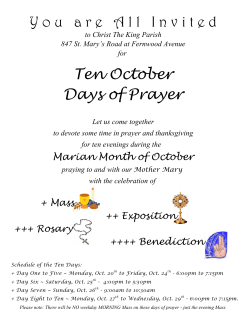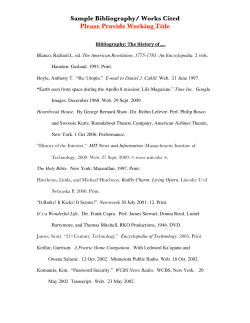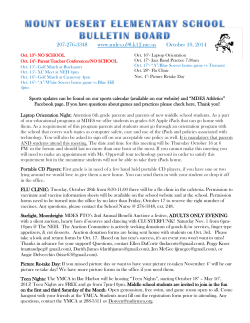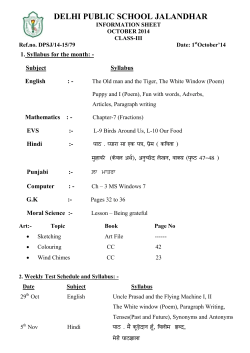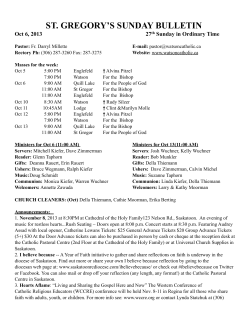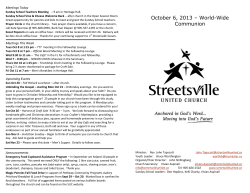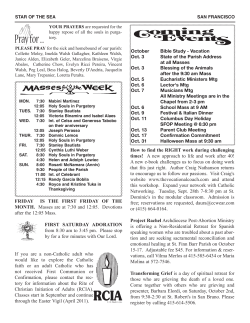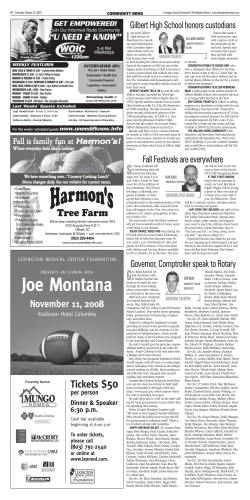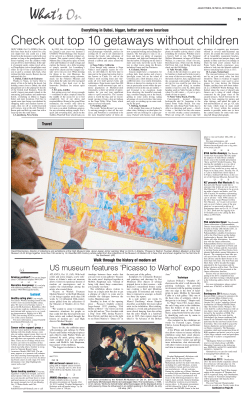
Our Presenter is Matt from New Horizons on How to use eBay
A Publication of the Kern PC Users Group Our Presenter is Matt from New Horizons on How to use eBay The meeting is at 7pm October 10 Volume 20 Number 10 Oct 02 Page1 Board Members President: Rhonda Pierce 363-0771 Pierce27@earthlink.net Past President: Bill Peacock 328-0180 bpeacock@pacbell.net Vice President: Rick Daney rddstewy@aol.com Secretary: Tony Rizos 872-5622 trizos@ncinternet.net Treasurer: William Lowell 664-1244 wlowell@bc.cc.ca.us Director: Steve Garcia sgarcia@bak.rr.com Director: Caroline Corser 871-9201 Cmcorser@pacbell.net Director: Director: Stuart Ree 589-6172 rsrcomp@pacbell.net Dr. Leonard Liss 663-8834 lissmd@earthlink.net Camera-ready copy should be submitted to Bits & Bytes, c/o Dave Chalmers, P.O. Box 2780, Bakersfield, CA 93303 KIPUG members who have computer related items for sale or trade or who have information they would like to share with other members may do so FREE of charge as space permits. Ads larger than business card size are subject to 50% of normal advertising fees. Non-members are subject to the normal advertising fees. Business Card $ 5.00 Quarter Page $ 15.00 Third Page $ 20.00 Half Page $ 30.00 Full Page $ 60.00 ADVERTISERS Newsletter Editor: David Chalmers dcchal@pacbell.net Education/SIG Coord Rick Daney Kipug Webmaster Sarah Perelli-Minetti Oct 10 Page 2 The following rates are for one insertion in the KIPUG newsletter. All copy must be received cameraready, no later than the 15th day of any given month for publication in the following month's newsletter. KIPUG will mail your direct computer user targeted mail advertisement (fully prepared for mailing, including postage) to our entire membership at a reasonable fee. For more information, please contact Rhonda Pierce, President, at pierce27@earthlink.net. Table of Contents The cupboard is empty right now. So all I have is a XP article and an ad. I hope November is better Ed. Oct 02 Page3 Windows XP: As Good as it Gets Bass discovers few crashes, great performance, and a minimum of headaches with XP Pro By Steve Bass, Pasadena IBM Users Group Kvetching about an operating system is therapeutic. Believe me, I’ve done lots, saving regular visits to my shrink. But my complaining has almost bottomed out since I made the full-time switch to Windows XP Pro. You caught that, right? I said almost. The reason is that even though I’m wildly pleased with XP, there are still a few features--and loose ends--I don’t like. I’ll describe a few of them in this and subsequent columns, and show you how XP has built-in ways to make the changes. (Of course, that’s one of my primary kvetches -- finding the spots to modify XP isn’t obvious and requires digging.) To play fair, I have to warn you that I’ll also do some proselytizing. I’m Oct 10 Page 4 going to do my best to win you over, so to speak, for your own good. That’s because once you get over the hassle of Product Activation, and Microsoft’s annoying single license policy, I really think your computing experience will increase substantially. I need another soapbox minute or two. Many of the PC World letters I receive complain, sometime bitterly, of a Microsoft conspiracy to force you into upgrading your system. Readers go on to say that in order to use XP, they’ll need to replace some of their devices (printers seem to be the first one not to work), or stop using old, 16-bit programs written for Win 95. I’ll concede and agree with many of the readers that Microsoft should have done a better job with previous Windows versions, then we wouldn’t be stuck in the corner having to upgrade. But the reality is that if you want a slick operating system, one that’s likely to make your computing day smoother and your workday more productive, you’ll have to upgrade. [Set Soapbox to Off]. No More Stinkin’ Crashes You probably know that XP is a pretty interface hung on Windows 2000’s architecture, so it resists crashes extraordinarily well. That’s true for XP but not necessarily for programs that still plow headfirst into the bit bucket. For instance, Eudora, my e-mail program, locks up when I try embedding what it considers a too large image into a message. And Internet Explorer also has a way of choking and freezing on some sites, doing its best to imitate a deer in headlights. With Win 9x, the Eudora and IE crash could bring the system down; even if it didn’t, I’d reboot to clear out any leftover holes in memory. Win XP contains the crash and stops it from contaminating the rest of the system. Using Control - Alt - Delete, the three-finger, soft-boot salute, calls up Task manager, one of XP’s shining lights. Click on the toasted app and it’s history. Crash Reports? No, Thanks Of course, with Microsoft at the helm, nothing as cool as Task Manager’s handling of a crash can be left alone. Microsoft insists on meddling by sending itself the details of the crash. No doubt, the crash report does pro- vide clues, often vital ones that you can review, to explain why a program crashes. But once I’ve looked at a report -- say, Eudora’s paige32.dll bug that Qalcomm won’t fix -- I’m no longer interested in seeing it pop up. So I’ve turned parts of the feature off. (From Start, Control Panel, Advanced tab, Error Reporting.) This dialog gives me choices, and they’re good ones. I can get the report but not send it, opt to hear only about programs or XP’s errors, or even add specific programs to watch. Zap, You’re Restored GoBack was the first successful utility to save snapshots of a PC’s hard drive and let you restore the drive to a time when things were running well. It shouldn’t surprise you to see a similar feature in Windows XP.(Roxio’s GoBack, $40, download at www.roxio.com.) Quick aside: Many of Microsoft’s niftier features are from the brain trusts of third-party companies. Woody , creator of dozens of Office, and specifically Word add-ons, said that to Oct 02 Page5 me in a private e-mail recently. More in another column. checkpoints, those restore points XP does automatically) takes up disk space. XP’s System Restore does just about everything does, just not as well. Nonetheless, it’s an improvement over the way it worked in Windows ME, and a handy tool. I create a Restore point just before installing a new application. If the installation goes kaflooey, I use System Restore to jump five minutes into the past and get my system going again. You can dump all but the last system point by using XP’s Disk Cleanup tool. Open Disk Cleanup, by clicking Start, choose All Programs, Accessories, System Tools, select Disk Cleanup, and choose the More Options tab. (Shortcut: From Start, Run, type cleanmgr.) I use it so often, I pinned it onto my Start Menu for easy access. Try it: Find System Restore in All Programs, Accessories, System Tools and right mouse click on the icon and choose Pin on Start menu. Easy, no? System Restore’s Problems The problem? System Restore isn’t perfect. While I haven’t had a problem in the 25 times I’ve used it, some reports on the Internet talk about DLLs that should be gone after a System Restore, are still on the system. One thing Microsoft doesn’t tell you is that each Restore Point (and system Oct 10 Page 6 In the next series of columns, I’ll show you other features built into XP that can keep you focused on productivity rather than rebooting two or three times a day or recovering from crashes. § Steve Bass is a Contributing Editor with PC World and runs the Pasadena IBM Users Group. He's also a founding member of APCUG. Check PCW's current edition at www.pcworld.com/resource/toc/ index.asp and sign up for the Steve Bass online newsletter at www.pcworld.com/bass_letter. Oct 02 Page7 Oct 10 Page 8 Oct 02 Page9 Thanks to Linda for this paid advertising. And We hope the restaurant does well Ed. Oct 10 Page 10 Oct 02 Page11 First Class Stamp Here P.O. Box 2780 Bakersfield, CA We are on the web at WWW.KIPUG.ORG Your Address Here Sarah Perelli-Minetti Webmaster Meetings are held on the second Thursday of the month at the Kern Superintendent of Schools Building. 17th and L streets Downtown Meeting Time is 7 pm Oct 10 Page 12
© Copyright 2025
